Brake Calipers and Wheels? Now from a 3D printer!
Volkswagen has opened a new and highly modern 3D printing center at the Autostadt. This makes Wolfsburg a central site for metallic 3D printing.
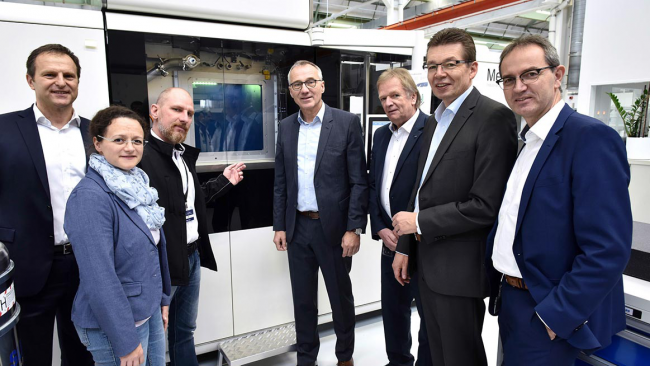 A tour of the 3-D printing center:
A tour of the 3-D printing center:
in the presence of the management and Works Council, Oliver Pohl, Head of Additive Manufacturing at Volkswagen (third from left), presents the new printers, production technologies and workplaces. Center: Dr. Andreas Tostmann, Member of the Board of Management for Volkswagen Brand Production
With a new generation of printers, the Volkswagen brand’s Toolmaking unit at the Wolfsburg site will soon be able to go into 3D series production. The new generation were developed in cooperation with the printer manufacturer HP and the component manufacturer GKN Powder Metallurgy. At the opening ceremony for the 3D printing center, the Group presented a metallic production process known as binder jetting that sets new standards in speed, flexibility and automation. The Autostadt now has the Group’s most modern 3D printing technology.
![]() 3D printing at Volkswagen Toolmaking
3D printing at Volkswagen Toolmaking
Expansion of the facility from 460 to 3,100 square meters means one thing above all for the Volkswagen brand – a new working space where toolmakers, developers, designers and researchers can work together in an interdisciplinary context in even more agile ways. And thanks to the modular, expandable structure of the 3D printer, many manual steps in work processes can be eliminated. On the one hand, automated processes will enable Volkswagen Toolmaking to make its production processes more efficient and cost-effective. On the other hand, the process will also allow a larger number of 3D materials to be produced more rapidly. At present, Wolfsburg’s Toolmaking unit is still researching and building prototypes and tools. But toolmaking specialists in Wolfsburg are also working on lightweight construction concepts that stabilize the steel and therefore also the components. Plans also call for 3D printing technology to be used in series production at the site.
![]() Printed parts for a racing car
Printed parts for a racing car
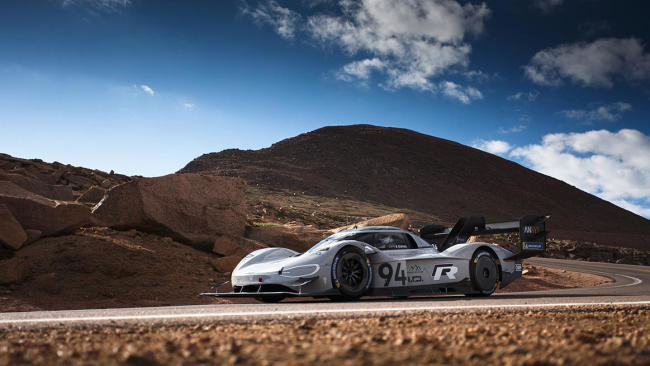 When developing the I.D. R Pikes Peak electric racing car, Volkswagen engineers used a model for which a large number of individual parts had been produced in 3D printing
When developing the I.D. R Pikes Peak electric racing car, Volkswagen engineers used a model for which a large number of individual parts had been produced in 3D printing
Three-dimensional printing will play a key role in the future, and this can already be seen in the construction of the race car I.D. R Pikes Peak electric. In development work for wind tunnel tests, Volkswagen engineers used a model that had a variety of individual components made by 3D printing. These parts have also been used in test drives and even in finished race cars – in the form of small components such as cable mounts and switches.
![]() Printed 3D wheels for a moon rover
Printed 3D wheels for a moon rover 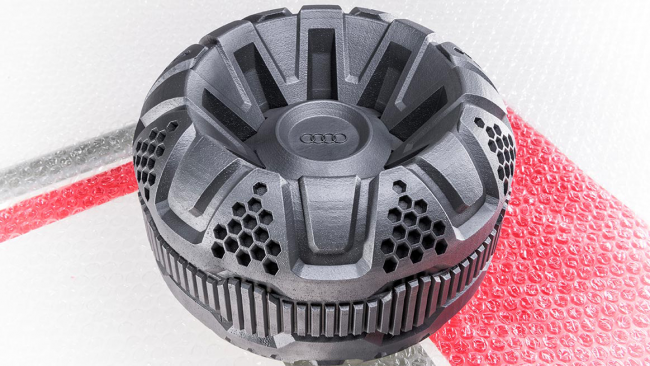
The 3D wheels of the moon rover Audi quattro-lunar
But Volkswagen is not the only brand in the Group to use metallic 3D printing. An Audi team at a 3D printing center in Ingolstadt is also studying ways to further advance the technology for both its brand and the Group. Spare-part production also plays a major role at the site. Original replacement parts that are rarely needed, such as water connecting pipes for the W12 engine, have been produced here with 3D printing using processes such as laser melting. And the moon rover, the Audi lunar quattro, was also made in part with 3D printed materials. Its wheels, for example, are made of aluminum components produced at Audi’s metal 3D printing facilities in Ingolstadt.
![]() 3D spare parts for vintage cars
3D spare parts for vintage cars
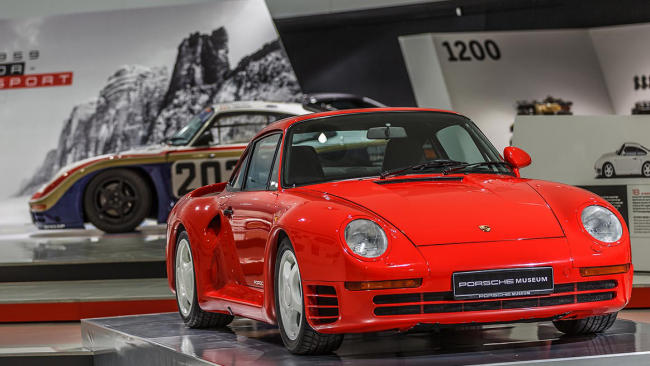 Porsche uses the 3D printing process to manufacture individual parts for classic cars such as the Porsche 959
Porsche uses the 3D printing process to manufacture individual parts for classic cars such as the Porsche 959
The Porsche brand is also using 3D printers to make exceedingly uncommon components that are only needed in small quantities. All parts made by 3D printing processes have to meet the highest technical and optical requirements for maximum fidelity to the original. One example is the release lever for the clutch in the Porsche 959, which is no longer available. This gray cast-iron part has to meet very high quality requirements and is seldom needed due to the low production number of the super sports car itself.
Source: volkswagen

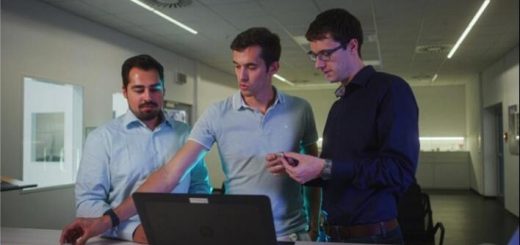
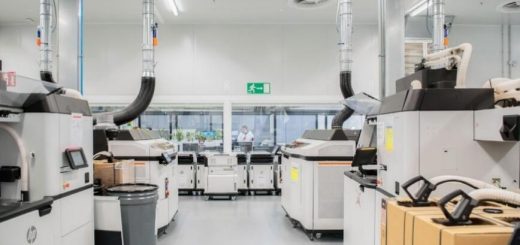
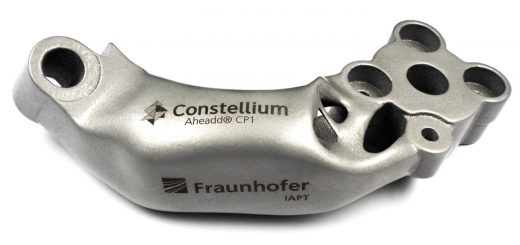
Recent Comments